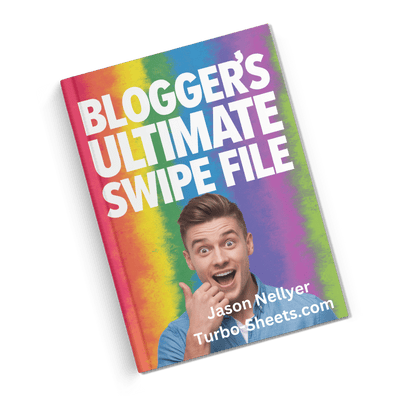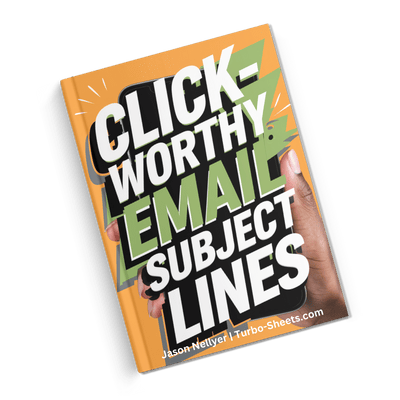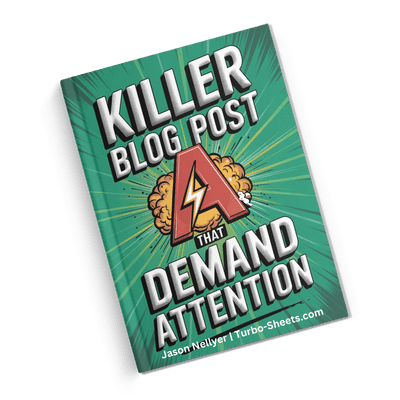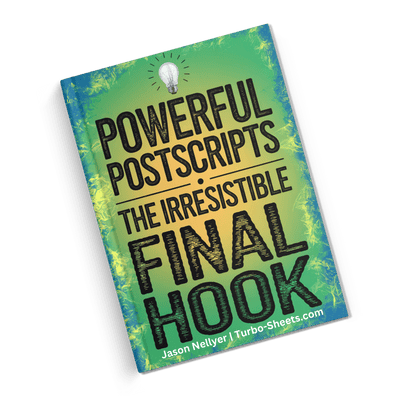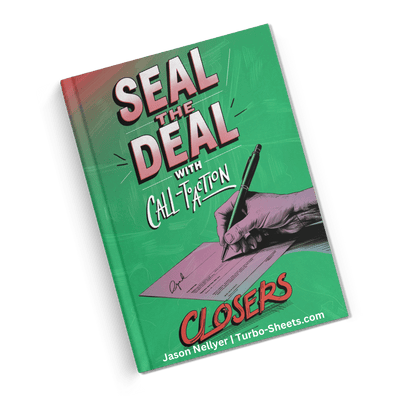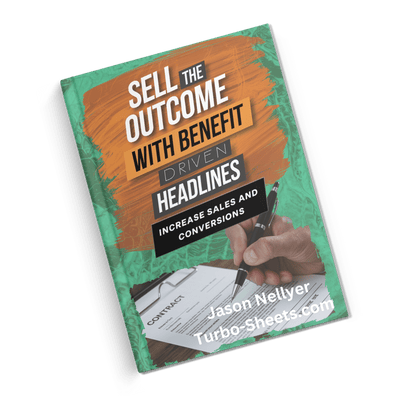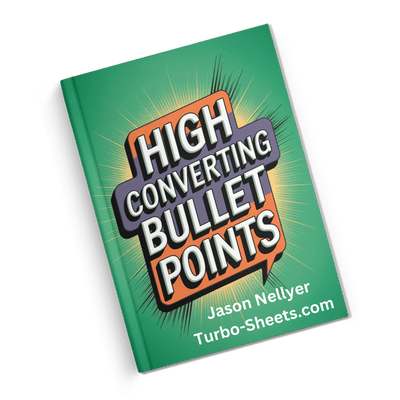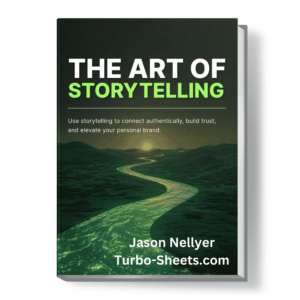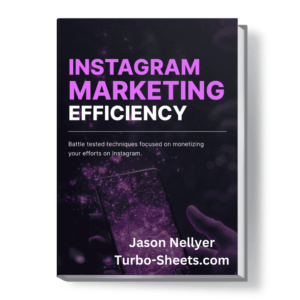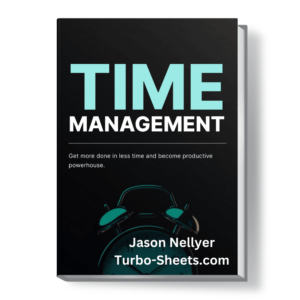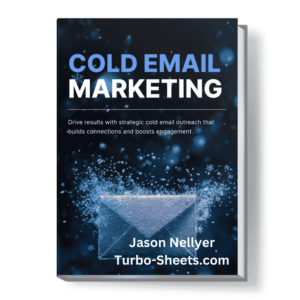🔥 Take Charge Of Your Blog With My Expert Tips and Tools! | Empowering You With My Blog and Resources!
Abandoned Checkout
Email Flows
They click "Buy" and then disappear. Ever wondered why customers abandon their carts at checkout and how you can win them back?
Abandoned checkout emails are a powerful tool to recover lost sales. By reaching out to customers who left items in their cart, you can remind them of their intended purchase and encourage completion.
Some argue that abandoned checkout emails can be intrusive and may annoy potential customers, leading to a negative brand perception.
It's true that poorly timed or overly aggressive emails can deter customers. If not executed thoughtfully, these emails might be seen as spam, causing recipients to unsubscribe or ignore future communications.
However, when crafted with care, abandoned checkout emails can be both effective and appreciated. By providing value and addressing customer concerns, these emails can guide customers back to complete their purchases.
Before we start, lets be clear. An "Abandoned Cart" is when a buyer has items in the cart but fails to make it to checkout. An "Abandoned Checkout" is when they press the "checkout" button, but fail to pay. The 2 scenarios are not the same and there's a whole lotta psychology at play!
In This Article
What's an Abandoned Checkout Email Flow?
The Lowdown on Checkout Abandonment Emails
Picture this: someone's browsing your online shop, finds something they like, adds it to their basket, and even goes to the checkout page. They might fill in their details, maybe even their payment info... and then they vanish. They don't complete the purchase. That's an abandoned checkout. An abandoned checkout email flow is a series of automated emails that you send to these folks to gently remind them about their uncompleted order and encourage them to come back and finish it. Think of it as a digital tap on the shoulder, a friendly "Oi, you left something behind!"
This isn't about chasing after every single person who adds something to their basket and then leaves. We're specifically talking about those who made it all the way to the checkout stage but didn't quite cross the finish line. These are the hot leads, the ones who were clearly interested enough to get that far. A well-crafted email sequence can be super effective at bringing a good chunk of these potential customers back to complete their purchase. It's like catching fish that were almost in the net.
The beauty of an automated flow is that it happens without you having to lift a finger each time. Once someone abandons their checkout, the system automatically sends out the emails you've set up, at the times you've specified. This could be a single reminder email or a series of two or three, each with a slightly different angle or incentive. It's a smart way to recover sales that might otherwise be lost, working quietly in the background to boost your bottom line.
Why Bother with Abandoned Cart Emails?
Right, so why should you even bother with these abandoned cart emails? Well, think about it - these people were *this close* to buying something from you. They've already shown interest in your products, spent time browsing, and even gone through the effort of starting the checkout process. That's a lot more engagement than someone who just landed on your homepage and left. Sending them a reminder is like picking up a dropped tenner - it's low-hanging fruit with a high chance of reward.
These emails aren't just about recovering lost sales, though that's a pretty big perk. They also give you a chance to understand *why* people might be abandoning their checkouts in the first place. Maybe there was an unexpected shipping cost that popped up at the last minute. Perhaps they had a question about a product but couldn't find the answer easily. The responses you get (or even the lack of them leading to a completed purchase after a reminder) can give you valuable insights into potential pain points in your checkout process.
Plus, a friendly and helpful abandoned cart email can actually boost your brand image. It shows that you care about your customers and are willing to go the extra mile to help them. Instead of just losing a sale, you're creating an opportunity to build a better relationship. A simple "Did you have any trouble checking out? We're here to help!" can go a long way in building trust and encouraging future purchases. It's a win-win, really - you get a chance to recover a sale, and the customer feels looked after.
Key Ingredients of Your First Reminder Email
That very first email you send after someone abandons their checkout is crucial. You want to be helpful and gentle, not accusatory or pushy. A friendly and empathetic tone is key. Start with a simple, clear subject line that jogs their memory, something like "Did you forget something?" or "Your basket is waiting!" Make sure it's instantly recognisable as coming from your store.
Inside the email, the first thing you should do is remind them what they left behind. Include a clear image of the items in their cart and the prices. This helps them quickly remember what they were interested in. You might also want to briefly mention if their items are still in stock to create a little sense of urgency without being too forceful.
Make it super easy for them to get back to their checkout. Include a prominent and clear call-to-action button that takes them directly back to their saved cart. Something like "Return to Your Basket" or "Complete Your Order" works well. Finally, offer some helpful support. Include your customer service contact details in case they ran into any issues during checkout, like a question about shipping or payment options. A little bit of help can go a long way in turning an abandoned cart into a completed sale.
Crafting Follow-Up Emails That Convert
Building on the Initial Reminder Message
So, you've sent that first gentle nudge. If they haven't come back yet, your follow-up emails need to build on that initial message without being annoying. Think about offering a little extra incentive. Maybe a small discount on the items in their cart or free shipping if they complete their purchase within a certain timeframe. This can be just the push someone needs to go from "maybe later" to "yes, please!"
In your follow-up, you could also try addressing potential reasons why they might have abandoned their checkout. Did they have concerns about shipping costs? Highlight your affordable or free shipping options. Were they worried about security? Reassure them about your secure payment process. Showing that you've thought about their potential concerns can build trust and encourage them to reconsider.
Don't be afraid to create a sense of urgency in your later follow-ups, but tread carefully. Phrases like "Your items might sell out soon!" or "This offer ends in 24 hours!" can be effective if used sparingly. The key is to provide value and address potential objections, rather than just repeatedly saying "Come back and buy!". A well-planned sequence of follow-up emails offers multiple opportunities to win back that potential customer.
Personalising Your Abandoned Cart Communications
Just like with any other customer communication, personalisation can make a big difference with abandoned cart emails. Using the shopper's name in the subject line and body of the email is a basic but effective start. You can also go a bit further by referencing the specific items they left in their cart. Seeing the image of that thing they really liked can be a powerful reminder.
If you have any information about their browsing history or past purchases, you could even include a subtle suggestion related to the items in their cart. For example, if they left a pair of shoes, you might suggest a pair of socks that other customers often buy together. This shows that you're paying attention and trying to be helpful.
Think about the timing of your emails based on their behaviour. Someone who abandoned their cart just a few minutes ago might just need a gentle reminder, while someone who left it a day ago might need a bit more incentive. By making your abandoned cart emails feel more personal and relevant to each individual shopper, you're more likely to recapture their interest and turn that abandoned cart into a completed sale.
Timing and Frequency of Your Email Sequence
Getting the timing right with your abandoned cart emails is crucial. You don't want to wait too long and risk the shopper losing interest, but you also don't want to bombard them with emails immediately after they leave. A good starting point is to send your first reminder email about an hour after the checkout was abandoned. This gives them a little time in case they were just momentarily distracted but keeps your brand top-of-mind.
For a second follow-up, consider sending it around 24 hours later, especially if the first one didn't result in a purchase. This is a good time to introduce a small incentive, like a discount or free shipping. A third and final email, if you choose to send one, could go out around 48-72 hours after abandonment, reiterating the offer and perhaps creating a bit more urgency about stock levels or the limited-time nature of the incentive.
It's important to monitor your results and see what works best for your audience. Some businesses find that a single reminder email is sufficient, while others see better results with a sequence of two or three. Pay attention to your open rates, click-through rates, and conversion rates for each email in your sequence to fine-tune your timing and frequency for maximum impact.
Top Tips for Checkout Recovery Emails
Crafting Compelling Subject Lines That Get Opened
Your subject line is the first thing a potential customer sees, so make it count! It needs to be clear, concise, and intriguing enough to make them want to open the email. Try to create a sense of curiosity or offer a clear benefit. Questions like "Did you forget something in your basket?" or statements like "Your items are waiting for you!" can be effective.
Personalisation can also boost your open rates. Including the shopper's name in the subject line can make the email feel more relevant and less like a generic automated message. You could also try mentioning the specific items they left behind, for example, "Still thinking about that [Product Name]?"
Experiment with different subject lines to see what performs best with your audience. A/B testing different wording and formats can give you valuable insights into what grabs their attention. Keep them relatively short so they don't get cut off on mobile devices. A compelling subject line is the first step in recovering that abandoned sale.
Using Clear and Action-Oriented Language
In your abandoned cart emails, make it super clear what you want the recipient to do. Use strong, action-oriented language in your call-to-action buttons. Instead of a generic "Click here," try something like "Return to Your Basket," "Complete Your Purchase," or "Claim Your Discount." The more specific you are, the more likely people are to take the desired action.
Keep the language throughout the email concise and easy to understand. Avoid jargon or overly technical terms. Get straight to the point about their abandoned items and how they can complete their order. Make sure the benefits of returning are clear, whether it's receiving the items they wanted or taking advantage of a special offer.
Use formatting like bold text or different coloured buttons to make your calls to action stand out visually. Make it as easy as possible for the shopper to understand what to do next and to complete their purchase with minimal effort. Clear and direct language removes any ambiguity and guides them smoothly back to your checkout page.
Making the Return Process Seamless
Once someone clicks on the link in your abandoned cart email, the process of returning to their checkout should be as smooth and frictionless as possible. Ideally, the link should take them directly back to their saved cart with all their items still there and ready to purchase. They shouldn't have to log in again or re-enter any information they've already provided.
If there were any issues during their initial checkout attempt (like a technical glitch or a problem with their payment method), make sure these are resolved or that you offer clear guidance on how to overcome them. If you're offering a discount in your follow-up email, ensure that this is automatically applied when they return to their cart, so they don't have to hunt for a coupon code.
Think about the entire user experience. The easier and more convenient you make it for them to complete their purchase, the higher your chances of recovering that abandoned cart. A clunky or confusing return process can quickly lead to further frustration and a lost sale. Streamlining this step is crucial for converting those reminders into actual revenue.
Advanced Tactics for Abandoned Cart Recovery
Offering Dynamic Discounts and Incentives
Instead of offering the same generic discount in every follow-up email, consider using dynamic discounts that change based on the shopper's behaviour or the value of their cart. For example, you could offer a small discount in the second email and a slightly larger one in the final reminder to create a stronger sense of urgency.
You could also segment your abandoned cart emails based on the total value of the items left behind. Someone with a high-value cart might be more responsive to a more significant discount or a special offer like free express shipping. This approach allows you to be more strategic with your incentives and maximise your chances of recovery without eroding your profit margins unnecessarily on smaller orders.
Think about other types of incentives beyond just discounts. Free gifts with purchase, extended warranties, or even a personal phone call from a customer service representative for high-value abandonments could be effective in certain situations. The key is to experiment and see what kind of offers resonate best with different segments of your audience.
Highlighting Security and Trust Factors
One of the reasons why people abandon their checkouts can be concerns about security, especially if they're purchasing from a website they haven't used before. Your abandoned cart emails are a good opportunity to reassure them about your secure payment processing and data protection measures.
Include trust badges or security logos in your emails to show that you're a legitimate and safe place to shop. You could also briefly mention your secure payment gateway or your privacy policy. If you have positive customer reviews, consider including a short testimonial in your follow-up emails to build social proof and increase confidence.
Addressing these potential concerns proactively can help to overcome any hesitation the shopper might have had about completing their purchase. By highlighting your commitment to security and trust, you can make them feel more comfortable about returning to their cart and finalising their order.
Testing Different Email Designs and Content
Don't just set up your abandoned cart email flow and forget about it. Continuously test different aspects of your emails to see what performs best. Experiment with different subject lines, email copy, calls to action, layouts, and even the timing of your sends. A/B testing different variations can give you valuable insights into what resonates most with your audience.
For example, you could test whether a more visually focused email with large product images performs better than a text-based one. You could also try different wording for your call-to-action buttons or experiment with offering different types of discounts. Pay close attention to your open rates, click-through rates, and conversion rates for each variation to identify what's most effective at recovering abandoned carts.
Regularly reviewing and refining your abandoned cart email strategy based on your testing results is essential for maximising its effectiveness and ensuring you're not leaving potential revenue on the table. What works well today might not work as well tomorrow, so continuous optimisation is key.
Winning Back Those Almost-Customers
A well-thought-out abandoned checkout email flow is a vital tool for any online business. It's your chance to reconnect with those oh-so-close customers and nudge them towards completing their purchase. By being helpful, offering gentle reminders, and sometimes a little extra incentive, you can recover a significant portion of lost sales and boost your revenue without a huge amount of extra effort.
Remember to keep your tone friendly and empathetic, focus on making the return process easy, and always be testing and refining your approach. Pay attention to what works best for your audience and don't be afraid to try new things. With a smart strategy in place, those abandoned carts don't have to be lost causes – they can be valuable opportunities to reconnect and convert.
Points For Consideration
-
- Set up your first reminder promptly.
- Show the items they left behind.
- Offer clear return to checkout links.
- Consider a small discount.
- Test your subject lines often.
Hi! I'm Jason!
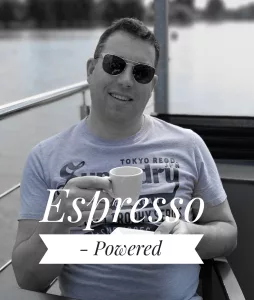
Hey there! I'm Jason and i'm here to help you succeed with your online business.
Whether you are an internet marketer or a regular business with a website I can help you succeed.
Looking for more traffic, leads or sales? Stick around, you've come to exactly the right place to help you succeed!
(And yeh, I LOVE coffee!)
Let's Connect!
Subscribe
Join 20,000+ subscribers and get access to my free resources right in your inbox.
Grab This Free Ebook!
Bloggers Swipe File
Never struggle with content ideas again!
Learn How To:
- Write compelling headlines
- Structure engaging posts
- Boost reader engagement
- Increase shares and traffic
- Save time on writing
Pay nil at the checkout!
Hit the button and complete via checkout.
Be Quick! Get It Free Before The Counter Hits Zero!
Grab This Free Ebook!
Hypnotic Openings
Grab attention from the very first sentence!
Learn How To:
- Write curiosity-driven intros
- Use storytelling for impact
- Set the tone instantly
- Create emotional connections
- Keep readers hooked
Pay nil at the checkout!
Hit the button and complete via checkout.
Be Quick! Get It Free Before The Counter Hits Zero!
Grab This Free Ebook!
Click-Worthy Headlines
Boost your open rates with subject lines that demand attention!
Learn How To:
- Write curiosity-driven subjects
- Use power words effectively
- Leverage personalisation
- Create urgency and FOMO
- A/B test for best results
Pay nil at the checkout!
Hit the button and complete via checkout.
Be Quick! Get It Free Before The Counter Hits Zero!
Grab This Free Ebook!
Killer Blog Post Headlines
Struggling to come up with blog titles?
Learn How To:
- Write click-worthy titles
- Use power words effectively
- Optimise for SEO and social
- Create curiosity and urgency
- Increase reader engagement
Pay nil at the checkout!
Hit the button and complete via checkout.
Be Quick! Get It Free Before The Counter Hits Zero!
Grab This Free Ebook!
Persuasive Guarantees
Eliminate buyer hesitation with compelling guarantees that build trust and boost conversions.
Learn How To:
- Craft trust-building guarantees
- Reduce purchase hesitation
- Use social proof effectively
- Make bold but believable claims
- Turn sceptics into buyers
Pay nil at the checkout!
Hit the button and complete via checkout.
Be Quick! Get It Free Before The Counter Hits Zero!
Grab This Free Ebook!
Powerful Postscripts
The last thing readers see is often the most persuasive!
Learn How To:
- Use postscripts for impact
- Reinforce key benefits
- Create urgency effortlessly
- Add emotional appeal
- Boost conversions instantly
Pay nil at the checkout! Hit the button, go to the menu (shopping cart) (no purchase req'd), then complete via checkout.
Be Quick! Get It Free Before The Counter Hits Zero!
Grab This Free Ebook!
CTA Closers
A weak CTA means lost sales!
Learn How To:
- Write clear, action-driven CTAs
- Create urgency and scarcity
- Use persuasive language
- Guide readers effortlessly
- Increase sales and engagement
Pay nil at the checkout!
Hit the button and complete via checkout.
Be Quick! Get It Free Before The Counter Hits Zero!
Grab This Free Ebook!
Sell The Outcome
People don’t buy products - they buy results!
Learn How To:
- Highlight key benefits
- Speak to reader desires
- Create irresistible curiosity
- Tap into emotions effectively
- Increase conversions instantly
Pay nil at the checkout!
Hit the button and complete via checkout.
Be Quick! Get It Free Before The Counter Hits Zero!
Grab This Free Ebook!
Scroll Stoppers
Stand out in crowded feeds with scroll-stopping techniques!
Learn How To:
- Craft eye-catching headlines
- Use power words effectively
- Create curiosity-driven content
- Boost shares and interactions
- Drive more clicks and leads
Pay nil at the checkout!
Hit the button and complete via checkout.
Be Quick! Get It Free Before The Counter Hits Zero!
Grab This Free Ebook!
Perfect Headlines
Your title makes or breaks your blog post!
Learn How To:
- Write SEO-friendly titles
- Grab attention instantly
- Use curiosity for engagement
- Increase shares and clicks
- Convert readers into fans
Pay nil at the checkout!
Hit the button and complete via checkout.
Be Quick! Get It Free Before The Counter Hits Zero!
Grab This Free Ebook!
Convert With Bullet Points
Turn scanners into buyers with bullet points that sell!
Learn How To:
- Highlight key benefits
- Create intrigue effortlessly
- Keep readers engaged
- Maximise sales copy impact
- Make content easy to scan
Pay nil at the checkout!
Hit the button and complete via checkout.
Be Quick! Get It Free Before The Counter Hits Zero!
Grab This Free Ebook!
Action Headlines
Your headline is your first impression - make it count!
Learn How To:
- Use power words strategically
- Create curiosity and intrigue
- Structure headlines for impact
- Make readers take action
- Write for SEO and engagement
Pay nil at the checkout!
Hit the button and complete via checkout.
Be Quick! Get It Free Before The Counter Hits Zero!
Best Sellers




